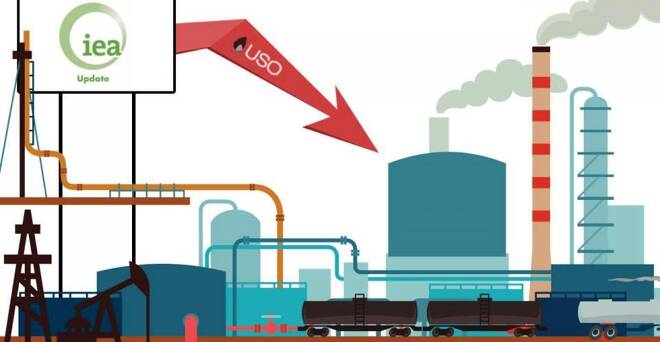Advertisement
Advertisement
Is There A Winner In The Oil War?
By:
Crude oil prices are keeping pace with the rising dollar, which is quite unusual as the stronger dollar usually weighs down dollar denominated
Crude oil prices are keeping pace with the rising dollar, which is quite unusual as the stronger dollar usually weighs down dollar denominated commodities. Crude oil is trading at 45.43 after falling significantly on Thursday. Oil prices continued to fall Thursday as the market expected global supplies exceeded demand. U.S. crude supplies of last week gained 2.8 million barrels to 482.8 million barrels, beating market expectation, the U.S. Energy Information Administration said in its weekly report on Wednesday. The U.S. supplies figure was 102.6 million barrels more than a year ago. U.S. crude production added 48,000 to 9.16 million barrels a day last week, according to the EIA’s report.
The Organization of Petroleum Exporting Countries pumped more crude above the limit the group set in October, reaching the highest level since 2008, according to a market survey. OPEC maintained it output quota of 30 million barrels per day at June’s meeting. The cartel’s output accounts for around 40 percent of the global crude output. OPEC member Iran planned to raise its crude output by 1 million barrels per day by the end of next March.
At this point, hopes for a major recovery in oil and gold prices appear somewhat optimistic. The gold price slid to its lowest level in nearly two months this week – only slightly above $1100 an ounce – after US central bank boss Janet Yellen warned that an interest rate increase in December was a “live possibility”.
Meanwhile, the oil price was dragged down by fresh figures that US crude inventories climbed for a sixth week in a row. Fears of a global glut have kept the oil price trading in a narrow range between $44 and $50 a barrel. Brent oil is trading at 48.21 on Friday morning gaining 10 cents.
Not surprisingly, there is a strong link between the fortunes of both commodities. Demand for both oil and gold has been dented by a slowing Chinese economy, which is expected to grow this year at its slowest annual pace in a quarter of a century, despite aggressive interest rate cuts by the Chinese central bank.
The oil price has fallen by more than 50 per cent since mid-2014 as a combination of the surge in US shale oil production and the decision by Saudi Arabia to maintain output levels has caused a global glut. Iran is also vowing to boost its oil production and exports following the lifting of sanctions.
Technological advances have caused US oil production to rise by almost 5 million barrels a day over the past five years, and this output remains stubbornly high despite the drop in the oil price. So far, oil companies have responded to lower prices with rigorous cost-cutting, including reducing the prices they pay to their suppliers. They have also been “high-grading” their operations by focusing on the most productive areas.
After all, most US oil producers are able to cover their operating costs as long as the oil price remains above $40 a barrel. But analysts warn that this prolonged period of low oil prices is causing problems for the US shale industry, and this is reflected in a fall of more than 60 per cent in the past year in the number of rigs drilling for oil.
About the Author
Barry Normanauthor
Did you find this article useful?
Latest news and analysis
Advertisement
